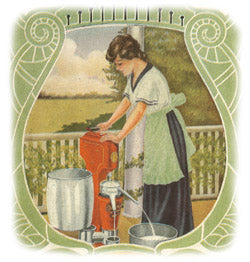About Claravale Farm

What Does Claravale Farm Feed Its Cows?
We feed our cows a traditional diet of pastures, organic hay, and non-GMO grain-based dairy feed.
Why aren't Claravale Farm’s cows totally pasture fed?
Claravale Farm is a traditionally run dairy and we don't think total pasture feeding of dairy cows is appropriate for a number of reasons.
Contrary to popular belief, total, year round pasture feeding is not natural for cows and is not the way in which dairy cows have historically been managed. More typical is for dairy cows to get access to some pasture during the natural growing season (winter and spring here) and to be fed mostly hay, grain and other produce during the rest of the year. This is what we do at Claravale. In this way, farmers have historically taken advantage of natural yearly cycles of rainfall and production. Year round pasture feeding of dairy cows requires the artificial creation of year round pastures by intensive irrigation, which requires energy and water, both limited resources in California.
Here are a couple of important facts for people who are not agriculturally inclined:
- Hay is dried pasture.
- Grain is grass seed.

All three of these feeds (hay, grain, pasture) are completely natural and important feeds for dairy cows. All three are historically important feeds for dairy cattle. All three have been important components of the diets of dairy cattle for the entire history of their existence on this earth. A cow grazing on a naturally cycling pasture (in California, for example) will be eating green pasture for part of the year, but as that pasture matures and dries out the cow will continue to eat it but it will now be called standing hay (= hay). As the pasture matures the grass forms seed heads (= grain) and dries out. When this happens, the nutrition in the leaves and stems decreases and the nutrition in the seeds (= grain) increases. During much of the year, a cow grazing on a naturally cycling pasture will be getting a large percentage of its nutrition from this grain (= grass seeds).
A good quality, high producing dairy cow cannot do well on green pasture alone. Even the best pasture does not contain the nutrition it needs to produce the milk it was bred to produce. (Important note: this is different than for beef cattle that can do just fine on green pasture alone. Beef cattle only put on a few hundred pounds of weight in their lives. Dairy cows do this as well and produce thousands of gallons of milk every year in addition.) By adding hay and grain to the diet of dairy cows you are simply feeding them concentrated pasture. By drying pasture into hay the nutrition it contains is concentrated ten fold. Dairy cows, however, need even more than this. To do well, dairy cows need the best cuttings of the best hay possible. Hay that tests the highest in nutrition is referred to in the trade as ‘dairy test’. It costs a premium and is reserved for dairy cows.
Even given the best, most nutritious, feed possible, many cows still lose weight during the early stages of lactation. If dairy cows are not given the nutrition they need, they will be severely stressed and will be susceptible to many infectious and metabolic diseases. The cows will suffer as well as milk production and milk quality. For example ketosis and hypocalcemia are both common metabolic diseases in dairy cows that are caused by inadequate nutrition during lactation. Both of these diseases can kill cows very quickly.

Cows are very smart about food. They are expert at sniffing out (literally) food that is best for them. Cows do not want a diet of green pasture alone. Given long term free access to pasture, hay and grain they will eat lots and lots of hay and grain.
Historically, no dairy based culture has ever tried to artificially create year round pastures to feed dairy cows. It makes no sense with respect to cow nutrition, water use, or energy input. Historically, farmers work with the natural cycles, utilizing green pasture when it is available and at its height of nutrition but also harvesting this pasture when it is at its height, concentrating it, and feeding it to the dairy cows the rest of the year (that is, they make hay and store it in the barn). They also harvest grain and store it to feed to the cows throughout the year.
This is what we do at Claravale. We utilize naturally cycling pastures during the time of the year that it makes sense (up to seven months out of the year here in Panoche) and also feed the cows high quality organic hay and non-GMO grain. We are proud of how we care for our cows at Claravale. We are proud of how healthy they are and the quality of the milk they produce. We don’t pretend to do something we don’t.
In addition, grass-fed cows produce milk that has an "off" flavor. The older literature contains many references to the fact that cows which are on pasture produce milk which tastes bad. It is usually recommended in this literature that the cows be taken off of the pasture for a few hours before milking to limit this effect. These days, this is not a factor with most milk producers (including organic milk producers) because the milk is cooked and processed before sale so it doesn't taste good anyway. The effects of the grass on milk taste will be masked by the effects of all the other processes. Every year when our cows do get some pasture we always get complaints about the taste of the milk. At Claravale Farm, taste is an important component of quality so we don't totally grass feed our cows, but rather give them a varied, traditional diet designed to keep them healthy while producing delicious milk.


Why does Claravale milk come in returnable glass bottles?
Natural, unprocessed milk has a delicate flavor and, if improperly handled, can readily pick up foreign flavors from the environment. Milk in waxed or plastic containers can taste like the packaging. Glass has traditionally been used to package milk because it preserves its flavor and freshness. Also, reusable glass bottles are good for the environment because they never have to go to the landfill.
What breed of cows does Claravale Farm have?
We have Jerseys. This breed is world renowned for the quality of its milk, which contains higher concentrations of proteins, solids, butterfat, and beta-carotene than other breeds. Milk sold in supermarkets comes mostly from Holsteins, which produce larger quantities of more watery milk. Due to their breeding, Holstein milk also contains higher levels of Bovine Growth Hormone than Jersey milk.
Is Claravale Farm organic?
Claravale Farm is not certified organic by choice. We do not want to be certified organic because we do not agree completely with the organic regulations, both with their strictness in some areas and their laxness in others. Nor do we want to be associated with other conventional certified organic dairies which have some of the worst conditions and poorest quality milk on the market.
As with other good ideas that have been taken over by corporate America in order to make more money, rather than the dairies meeting strict organic standards, organic standards have been made more lax so that dairies can meet them without altering their procedures.
With respect to our organic status what we have chosen to do is maintain our own standards independent of a certification process and simply let our customers know what those standards are.
We feed our cows and goats a combination of organic hay and non-GMO grain. They are on pasture that has been fallow for decades.
- We do not use pesticides or antibiotics on the milking herds.
- We do not use any GMO feeds or products.
- We do not use bovine growth hormone or any other substances to increase milk production artificially.
- We do not use chemical fertilizers or herbicides.
- We do not bottle milk from any dairy other than our own.
With respect to antibiotics and worm medicines, we do use them when the need arises. We do not use them prophylactically, as is the case in many areas of the livestock industry. Since we have a very healthy herd the need arises infrequently. If a cow does have a condition which requires antibiotics we remove her from the milking herd, treat her, and when the antibiotics have cleared her system and cannot be detected in the milk she returns to the herd. This is standard practice in the dairy industry. Antibiotic use in dairy cattle is strictly regulated by the CDFA and milk containing antibiotics cannot be sold. Therefore—contrary to popular belief—antibiotics in conventional milk is not a problem, and was not even before the instigation of organic certification.

We believe that a strict ban on antibiotic usage in livestock is irrational and abusive. To not use any antibiotics because some areas of the livestock industry use them irresponsibly is silly. To let a cow suffer and die when she could be easily saved is criminal. We have a lot of respect for our cows, give them the best of care, and that includes a course of antibiotics if they need it. If you think cows are happier or healthier without antibiotics, you are wrong. We visited a conventional certified organic dairy recently that had a high rate of hoof rot among the cows and a barn full of sick and dying calves - both of which could be treated and eliminated with the judicious use of antibiotics.

